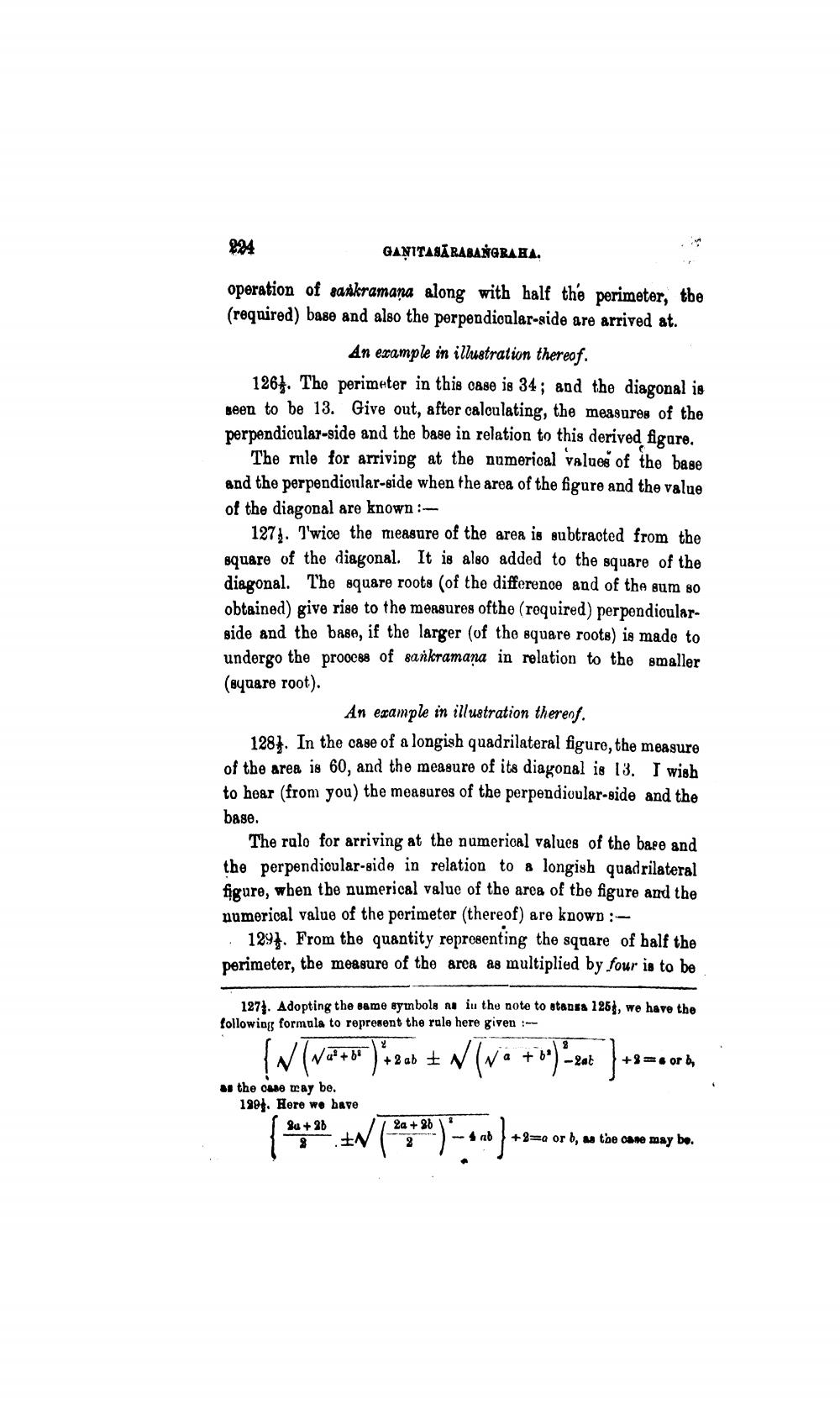________________
224
GANITASĀRABANGRABA.
operation of sarkramana along with half the perimeter, the (required) base and also the perpendicular-side are arrived at.
An example in illustration thereof. 1261. The perimeter in this case is 34; and the diagonal is been to be 13. Give out, after calculating, the measures of the perpendicular-side and the base in relation to this derived figare.
The rnle for arriving at the numerioal values of the base and the perpendionlar-side when the area of the figure and the value of the diagonal are known :
127). I'wice the measure of the area is subtracted from the square of the diagonal. It is also added to the square of the diagonal. The square roots of the difference and of the sum so obtained) give rise to the measures ofthe (roquired) perpendicularside and the base, if the larger (of the square roots) is made to undergo the prooCB8 of sankramana in relation to the smaller (square root).
An example in illustration therenf. 1281. In the case of a longish quadrilateral figure, the measure of the area is 60, and the measure of its diagonal is 13. I wish to hear (from you) the measures of the perpendioular-side and the base.
The rulo for arriving at the numerical values of the base and the perpendicular-side in relation to a longish quadrilateral figure, when the numerical value of the area of the figure and the numerical value of the perimeter (thereof) are known :
1297. From the quantity representing the square of half the perimeter, the measure of the area as multiplied by four is to be
127. Adopting the same symbole as in the note to stanss 125$, we have the following formula to represent the rule here given :--
{ w[ver+o) lva + o) - Zante +soor dy
as the chae tay be. 1994. Here we have
Su + 90
17 2a + 36
-4b
+= or b, u the case may be.




